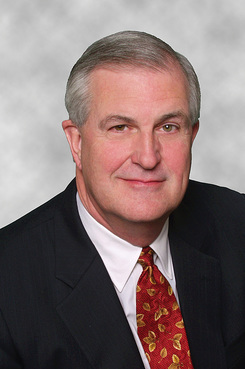As Rich Firms Set the Market, Mid-Tier Firms Wrongly Follow, Report Says
A new report warns Am Law Second Hundred firms from following the same business model as their wealthier competition.
January 09, 2019 at 05:30 AM
5 minute read
The original version of this story was published on The American Lawyer
 Image credit: Shutterstock.com
Image credit: Shutterstock.com
Demand for law firm services has generally been flat for years, and yet law firms raised their rates last year.
Associate productivity has been on a secular decline, and yet law firms gave those workers raises last year for the second time in three years.
James Jones, a senior fellow at the Center for the Study of the Legal Profession at Georgetown University Law Center, witnessed this behavior he described as “at the very least anomalous” in 2018. In a report issued by Georgetown and Thomson Reuters on Wednesday, Jones gave his answers about why he thinks it happened.
The short answer: Wealthy firms, which can afford to pay higher associate salaries because they can charge higher rates, are setting the market. Mid-tier firms, despite facing more troubling economics in a different market, are following their lead.
“We do not have one market for legal services anymore,” Jones said in an interview with The American Lawyer. “A lot of people have a really hard time being honest about where their services fall because the vast majority of American law firm services are in that big middle. And I've never met a lawyer who didn't like to think that he or she performed brain surgery. But you know, there just aren't that many big brain operations going on that clients are paying for.”
'Warning signs'
The annual report from Georgetown and Thomson Reuters, which warned of a “wake-up call” for stagnant firms in a prior report, this year also heralded some good news. Last year was a rare postrecession bright spot for the law firm market.
 James Jones
James JonesDemand (up 1.3 percent), negotiated billing rates (up 3.2 percent) and productivity (up 0.5 percent) all made positive gains last year, breaking from more recent years that have seen at least one of those metrics fall. This year marked the second year in a row of growing demand for law firms' time, which marks the first consecutive years of growth since 2010 to 2011.
But gains are increasingly driven by a smaller, wealthier portion of the legal market: The Am Law 50. That sector saw demand grow 3.4 percent; negotiated rates increase 4.8 percent; and productivity edge up 1.4 percent. Meanwhile, it was another year of stagnant growth for the Am Law Second Hundred and midsize firms. Second Hundred firms saw growth in demand up only 0.7 percent while their negotiated billing rates were up 2.9 percent and their productivity up 0.4 percent, lagging their larger competitors.
Those growth rates also look tepid compared with increases enjoyed by alternative legal service providers cited in the report. The ALSP market has grown to $10.7 billion in annual revenues, with a compound annual growth rate of 12.9 percent, the report said. At the same time, there is evidence those entities have moved up market, leading the authors of the report to conclude “it seems inevitable that, given current market pressures, growth of ALSPs will continue” for the foreseeable future.
For Jones, it adds up to a good year for law firms within the context of a changing market that will require different responses from law firms, depending on what type of clients they serve.
“There are clearly some warning signs and I don't think we ought to be popping the champagne corks here,” Jones said. “One of the biggest [warning signs] is if you really dig down into these numbers what you see is that is not a uniform performance across the market.”
'Dynamic' market
The report describes the new legal market as having moved from a “monolithic” market to a “dynamic” one, composed of three major categories of work: Unique legal expertise (20 to 25 percent of the market), comprehensive legal services (60 to 70 percent) and ancillary support services (10 to 15 percent).
Ancillary support services are described as non-legal services that law firms previously handled for clients but are now mostly handled by lower-cost providers.
The report says most law firms are competing with each other and alternative providers in the comprehensive legal services market. Still, they followed the lead of firms in the unique legal expertise market after those wealthier firms raised associate compensation and, in turn, raised rates.
To avoid making similar mistakes in the future, Jones said law firms should take a clear-eyed assessment of the types of clients they service. That assessment will also lead them to take certain strategies based on their competitive advantages, Jones said. For instance, firms competing in the middle of the comprehensive services market may find that legal talent and expertise is not necessarily as valuable to clients as efficiency and reduced costs, he said.
“These partners can't believe their press releases,” he said. “They've got to be honest about this if they're going to make the kind of strategic decisions that will enable them to be successful in this market.”
Read More:
Report Warns of 'Wake-Up Call' for Stagnant Firms
This content has been archived. It is available through our partners, LexisNexis® and Bloomberg Law.
To view this content, please continue to their sites.
Not a Lexis Subscriber?
Subscribe Now
Not a Bloomberg Law Subscriber?
Subscribe Now
NOT FOR REPRINT
© 2025 ALM Global, LLC, All Rights Reserved. Request academic re-use from www.copyright.com. All other uses, submit a request to [email protected]. For more information visit Asset & Logo Licensing.
You Might Like
View All
Penn State Dickinson Law Dean Named President-Elect of Association of American Law Schools


Arizona Board Gives Thumbs Up to KPMG's Bid To Deliver Legal Services

Big Law Practice Leaders Gearing Up for State AG Litigation Under Trump
4 minute readTrending Stories
Who Got The Work
J. Brugh Lower of Gibbons has entered an appearance for industrial equipment supplier Devco Corporation in a pending trademark infringement lawsuit. The suit, accusing the defendant of selling knock-off Graco products, was filed Dec. 18 in New Jersey District Court by Rivkin Radler on behalf of Graco Inc. and Graco Minnesota. The case, assigned to U.S. District Judge Zahid N. Quraishi, is 3:24-cv-11294, Graco Inc. et al v. Devco Corporation.
Who Got The Work
Rebecca Maller-Stein and Kent A. Yalowitz of Arnold & Porter Kaye Scholer have entered their appearances for Hanaco Venture Capital and its executives, Lior Prosor and David Frankel, in a pending securities lawsuit. The action, filed on Dec. 24 in New York Southern District Court by Zell, Aron & Co. on behalf of Goldeneye Advisors, accuses the defendants of negligently and fraudulently managing the plaintiff's $1 million investment. The case, assigned to U.S. District Judge Vernon S. Broderick, is 1:24-cv-09918, Goldeneye Advisors, LLC v. Hanaco Venture Capital, Ltd. et al.
Who Got The Work
Attorneys from A&O Shearman has stepped in as defense counsel for Toronto-Dominion Bank and other defendants in a pending securities class action. The suit, filed Dec. 11 in New York Southern District Court by Bleichmar Fonti & Auld, accuses the defendants of concealing the bank's 'pervasive' deficiencies in regards to its compliance with the Bank Secrecy Act and the quality of its anti-money laundering controls. The case, assigned to U.S. District Judge Arun Subramanian, is 1:24-cv-09445, Gonzalez v. The Toronto-Dominion Bank et al.
Who Got The Work
Crown Castle International, a Pennsylvania company providing shared communications infrastructure, has turned to Luke D. Wolf of Gordon Rees Scully Mansukhani to fend off a pending breach-of-contract lawsuit. The court action, filed Nov. 25 in Michigan Eastern District Court by Hooper Hathaway PC on behalf of The Town Residences LLC, accuses Crown Castle of failing to transfer approximately $30,000 in utility payments from T-Mobile in breach of a roof-top lease and assignment agreement. The case, assigned to U.S. District Judge Susan K. Declercq, is 2:24-cv-13131, The Town Residences LLC v. T-Mobile US, Inc. et al.
Who Got The Work
Wilfred P. Coronato and Daniel M. Schwartz of McCarter & English have stepped in as defense counsel to Electrolux Home Products Inc. in a pending product liability lawsuit. The court action, filed Nov. 26 in New York Eastern District Court by Poulos Lopiccolo PC and Nagel Rice LLP on behalf of David Stern, alleges that the defendant's refrigerators’ drawers and shelving repeatedly break and fall apart within months after purchase. The case, assigned to U.S. District Judge Joan M. Azrack, is 2:24-cv-08204, Stern v. Electrolux Home Products, Inc.
Featured Firms
Law Offices of Gary Martin Hays & Associates, P.C.
(470) 294-1674
Law Offices of Mark E. Salomone
(857) 444-6468
Smith & Hassler
(713) 739-1250








